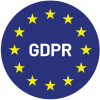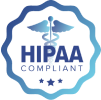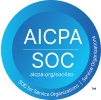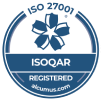The workplace in 2024 was a cauldron of volatility and evolving change, with stakeholders focused intensely on a better Employee Experience (EX) holding the answers to accelerating staff retention. This article looks back at twelve event-filled months to dissect the trends that merge into 2025 (and beyond) and how they impacted technology-centric strategies, workplace environment, culture, and employee engagement.
EX in 2024: The pros and cons
The 2024 employee experience covered crucial touchpoints, from interactions with bosses, peers, project teams, and customers to reviews, onboarding, surveys, and terminations (voluntary or involuntary).
Integrated with the work environment (in-office, remote, and hybrid), company culture, and the resource pool (i.e., provided technologies), the touchpoints fell into two categories.
- Those that motivate and energize enthusiasm (i.e., “the pros”)
- Those that discourage, demotivate, and create stress (i.e., “the cons.”)
The Pros
Why do these matter for businesses planning for 2025? The Employee Experience Advantage author Jacob Morgan notes that 2024 showed us a robust workplace can:
- Holistically create productivity and support participant lifestyles simultaneously.
- Promote synergy and diminish conflict within a sustainable framework.
- Integrate cultural, physical, and technological initiatives to demonstrate recognition, reward, and a social network employees want to access (versus “having to”).
The Cons
Still, we mustn’t lose sight of the obstructive touchpoints that can derail any energized EX with a heavy blow to profitability. According to Employee Benefit News, replacing workers costs 33% of their annual salaries.
- Suppose burnout generates employee churn of more than 10% over twelve months.
- In that case, the bottom line hit can be significant, not to mention the disruption to projects and despondency of remaining staff as they see peers leaving left, right, and center.
Six 2024 trend takeaways to help your 2025 employee engagement planning
To deliver a constructive perspective favoring the pros (and erasing or minimizing the cons), here are the primary 2024 trends you must consider in the coming year.
- Remote and hybrid work model resilience
- Work-life balance in focus
- AI-powered technologies personalizing EX
- Employee development and continuous learning innovations
- Employee autonomy and empowerment
- Employee feedback and voice
1: Remote and hybrid work model resilience
The remote and hybrid work models were steadfast in 2024, demonstrating remarkable adaptability based on trusting employees to self-motivate. A 2024 Employee Experience Trends Report reflected that hybrid-centric companies demonstrated:
- Comparatively impressive productivity and ROI KPIs.
- Many employees positively connected to the company culture.
- Most intending to extend their careers with their current employer.
- Improved engagement metrics all around.
Conversely, the research showed that full-time office workers fared the worst, providing feedback on several corrupted touchpoints.
Notably, several post-COVID-19 remote working challenges still need to be overcome. These revolve around:
- Sustaining a themed company culture.
- Creating equal employee opportunity.
- Combatting the absence of traditional project interaction.
- Dealing with “isolation” depression hitting some remote workers.
- Upgrading the home cybersecurity protections taken for granted in a company office.
- Compensating for imbalances in situations where an on-premises presence is required (factory, warehouse, transportation, engineering, etc.), by shifting emphasis to infrastructural renovations for an engaging office environment, flexible hours, wellbeing incentives, and social interaction events within the office setting.
In 2025, management will tackle the problematic remote working touchpoints with innovative HR initiatives, such as:
- Compulsory daily team meets.
- Integrating virtual technologies that facilitate face-to-face communication.
- Promoting peer-to-peer learning sessions.
- Periodic social events for remote workers to meet in-office.
TAKEAWAY #1 SUMMARY
- Flexibility is your ticket to success: The hybrid model is here to stay.
- Customize your workspaces when the remote working model is out: Comfort and productivity go hand in hand.
- Tackle the cons of remote working without hesitation: No model is perfect. Ignoring even a few obstructive touchpoints can upset the entire apple cart.
- You can’t compete without technology in your corner: No matter where the human resources of the business work (in-office, remote, or hybrid), AI-enhanced tools are pivotal to employee performance quality.
2: Work-life balance in focus
Work-life balance was front and center of HR strategizing in 2024. Why?
The dividing line between personal and career goals blurred as organizations focused on balancing the two to encourage optimal productivity.
Going the extra mile to accommodate employees’ personal needs in an intensely competitive labor marketplace creates an attractive workplace and a meaningful difference.
The hybrid working trend highlighted above is a function of this stakeholders’ thinking shift. However, that’s only half the story. The latter also covers the following examples of initiatives in the work-life balance arena:
- In-office flexible working hours.
- Mental wellness and counseling.
- Fitness programs.
- Rewarding days off for extraordinary performance.
- Four-day workweeks.
- Compulsory vacation leave (acknowledging that relaxation is a critical productivity/creativity catalyst).
In 2024, a mind-boggling majority of companies compounded their mental health initiatives and investments, focusing intensely on managing stress with avant-garde methodologies that rely on options such as resilience tools, telemedicine, and mindfulness programs.
Koa Health’s 2023 survey of HR leaders supported the above, showing that 98% of employers provide one or more mental wellbeing accommodations. Still, stakeholders admitted there’s much room for improvement in this crucial aspect of EX, resulting in strategic planning that extended beyond 2024. It converges on spending increases or reallocations to close gaps as they reoccur.
TAKEAWAY #2 SUMMARY
- Commit to flexible work scheduling: Create more family time without disturbing productivity.
- Go with the flow on remote work options: Discussed under (1) above.
- Holistically invest in employee mental support: Install counseling and activity programs emphasizing that rest, physical fitness, stress release, open discussion, therapy, wellness technology, and socializing are critical to improved productivity.
3: AI-powered technologies personalizing EX
In response to a salesman’s suggestion that that the Model T be offered in more colors, Henry Ford famously replied that the car would be available in “Any color the customer wants, as long as it’s black.”
That one-size-fits-all approach from 1909 is the diametric opposite of what the 2025 workplace demands. Why? It goes against the grain of customization, a common thread throughout this article. I’ve emphasized that employees’ unique needs, aspirations, and learning styles are at the cutting edge of workplace transformation. As a stakeholder, you must tailor the workplace experience to match the individual, not just the job description. In short, personalize, personalize, and when you think you’ve done enough, personalize more.
It’s essential to integrate technology into the future of your workplace. How?
Harness AI-empowered data analytics that create insight into employee behaviors, preferences, and feedback in a fraction of human team time. This depth of information enables you to facilitate a customized and personalized management approach and build a more inclusive organizational culture.
Software and apps are available through companies like Sogolytics, helping you connect seamlessly to employees’ career goals, life circumstances, and preferred working styles. Modern technology with professional guidance creates a constructive work environment offering 360-degree reviews that promote employee individuality, engagement, and satisfaction.
In 2025, effective communication and collaboration technology will build and sustain a strong organizational culture, a smooth workflow, and a connection between team members.
TAKEAWAY #3 SUMMARY
- Data-Driven Customization: Explore AI-centric software and apps to customize work experiences, matching individual preferences and strengths.
- Integrate employee feedback consistently, affordably, and accurately into your HR strategies: Access automated surveys that connect to a developing database. This is your hassle-free guide to take advantage of engaging EX touchpoints and dismissing obstructive ones for a more personalized work environment.
- Become acquainted with employee journey mapping. It’s a groundbreaking concept impacting HR design models. Sogolytics can provide insights into how these processes help extend employee lifecycles.
4: Employee development and continuous learning innovations
Expect 2025 to usher in accelerated employee development and continuous learning to bolster the employee experience aided by technology (see above). Organizations’ resource pools include upskilling methodologies connected to online courses, YouTube videos, podcasts, and Zoom workshops to align with employee media inclinations and time pressures.
Employees enter company cultures with an optimistic vision of growing personally and career-wise via a robust training program. The latter focuses on a broad range of topics that may include scenarios outside the workplace. Stakeholders often put AI automated scanners to work, discovering skill gaps and hidden talents in project teams. These innovative algorithms recommend the most suitable courses and education platforms to meet the company’s most urgent touchpoint gaps.
A proactive approach to employee development attracts high-quality candidates who value growth and career progression in a company that prioritizes the resources that make it possible.
TAKEAWAY #4 SUMMARY
- Upskill your employees, especially when deploying new technologies. This will be crucial to stay ahead of the curve in an intensely competitive market.
- Offer diverse learning platforms to your staff, from e-learning to workshops, mentorship, on-the-job virtual reality programs, certifications, and more. These will emerge as essential components within your employee engagement framework.
- Appreciate that career advancement and realistic employee ambitions will go hand in hand when HR departments strategize for 2025.
5: Employee autonomy and empowerment
Alphabet Inc. – the parent company of Google – has taken a unique approach to employee engagement by offering staff unique self-motivation (i.e., autonomy) provided by its “20% creative time, 80% work” program. This model permits staff to pursue innovative projects while upholding responsibility for their regular tasks. Google Adsense was the product of such an initiative – a massive company revenue generator.
Shifting to a trust-based culture is a giant step for entities with a hands-on approach – not strictly hands-off but a delicate balance between the two extremes.
- The theory is that employees who feel valued and responsible in an organization also have a sense of being significant success contributors.
- It drives several employees’ individual growth, propelling the organization forward. It confirms a fundamental work culture centered on improved job satisfaction and a surge in innovative thinking.
- Empowerment programs welcome employee initiative but only work in some parts of the business. If you go that route, be selective.
TAKEAWAY #5 SUMMARY
- Decision-making freedom aligns with role autonomy, in which you must build job satisfaction alongside innovation (i.e., for employee categories capable of this type of development). Empowerment programs encourage out-of-the-box thinking when it makes sense.
- Trust-based culture leans toward a hands-off approach, although not entirely in that camp. It’s unsuitable for relatively inflexible job descriptions where more than 95% of the focus is on completing tasks.
6: Employee feedback and voice
Without employee feedback, many of the initiatives above are pies in the sky. Technologies churn at half-speed if they don’t have employee data to evaluate. Here’s the rub: Getting employees to open up in a spirit of transparency is challenging. Fear of reprisal, boss intimidation, and other psychological inhibitors hamper surveys and qualitative analysis.
In 2025, progressive companies understand that continuous feedback from stakeholders, peers, and subordinates in 360-degree programs without prejudice or hierarchical consequences is the ticket to employee engagement. In other words, there’s no more waiting for six-monthly or annual reviews. The idea is constant input from unbiased sources, giving employees a vision of how others see them from every angle.
Netflix is a prime example of a 360-degree review system firing on all cylinders. There’s no reliance on formal annual reviews; it’s a daily activity. The company injects direct and candid communication for sharing information – bringing highly talented individuals into the team, where people trump process and collaboration outpaces individualism.
Studies have shown regular feedback cuts churn by 15%, with approximately 65% of employees wanting more feedback once they get a taste for ongoing dialogue and the boost it gives performance. Leaders involved in Netflix-style” operations appreciate their job is threefold:
- To listen
- Receive feedback on one’s management effectiveness
- Adjust one’s style accordingly
It’s an approach that empowers the employee as much as it does stakeholders, driving a trust culture, openness, and, ultimately, a more engaged and committed workforce.
TAKEAWAY #6 SUMMARY
- Real-time feedback from every quarter in the workplace creates a 360-degree HR vision involving peers, stakeholders, and subordinates.
- 360-degree feedback is the open sesame to a more comprehensive evaluation.
- Actionable Insights from feedback and employee development are the yin and yang of a robust EX.
Conclusion
As we continue through 2025, these trends highlight a shift towards a more employee-centered approach in the workplace. By embracing these trends, organizations can enhance employee experience, leading to higher engagement, productivity, and overall business success. In this dynamic HR environment, staying ahead requires professional consultation and support by accessing the resources of Sogolytics.
The takeaways outlined above fall front and center of our expertise, from optimizing your hybrid working models to work-life balancing, installing the appropriate technologies, personalizing the EX, continuous learning, and empowerment strategies.
Investing in your team is the surest path to success, and now’s the perfect time to take a step forward.
Ready? Learn how Sogolytics can help you get the feedback you need to engage your employees, boost retention, and build a better workplace for everyone. Let’s connect!














